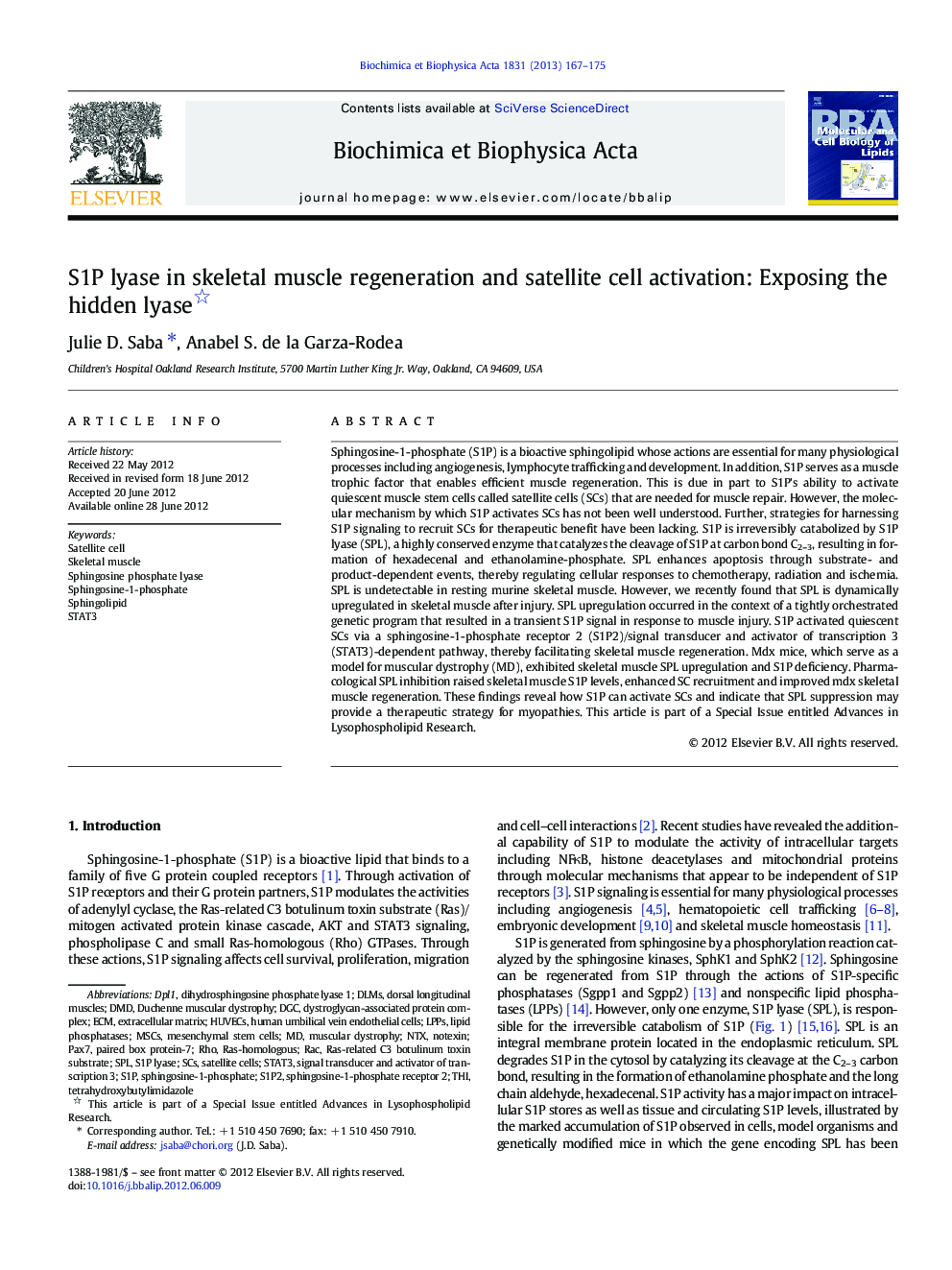| کد مقاله | کد نشریه | سال انتشار | مقاله انگلیسی | نسخه تمام متن |
|---|---|---|---|---|
| 1949326 | 1537746 | 2013 | 9 صفحه PDF | دانلود رایگان |

Sphingosine-1-phosphate (S1P) is a bioactive sphingolipid whose actions are essential for many physiological processes including angiogenesis, lymphocyte trafficking and development. In addition, S1P serves as a muscle trophic factor that enables efficient muscle regeneration. This is due in part to S1P's ability to activate quiescent muscle stem cells called satellite cells (SCs) that are needed for muscle repair. However, the molecular mechanism by which S1P activates SCs has not been well understood. Further, strategies for harnessing S1P signaling to recruit SCs for therapeutic benefit have been lacking. S1P is irreversibly catabolized by S1P lyase (SPL), a highly conserved enzyme that catalyzes the cleavage of S1P at carbon bond C2–3, resulting in formation of hexadecenal and ethanolamine-phosphate. SPL enhances apoptosis through substrate- and product-dependent events, thereby regulating cellular responses to chemotherapy, radiation and ischemia. SPL is undetectable in resting murine skeletal muscle. However, we recently found that SPL is dynamically upregulated in skeletal muscle after injury. SPL upregulation occurred in the context of a tightly orchestrated genetic program that resulted in a transient S1P signal in response to muscle injury. S1P activated quiescent SCs via a sphingosine-1-phosphate receptor 2 (S1P2)/signal transducer and activator of transcription 3 (STAT3)-dependent pathway, thereby facilitating skeletal muscle regeneration. Mdx mice, which serve as a model for muscular dystrophy (MD), exhibited skeletal muscle SPL upregulation and S1P deficiency. Pharmacological SPL inhibition raised skeletal muscle S1P levels, enhanced SC recruitment and improved mdx skeletal muscle regeneration. These findings reveal how S1P can activate SCs and indicate that SPL suppression may provide a therapeutic strategy for myopathies. This article is part of a Special Issue entitled Advances in Lysophospholipid Research.
► Skeletal muscle injury induces dynamic changes in S1P signaling and metabolism.
► S1P promotes skeletal muscle satellite cell activation via a STAT3-mediated pathway.
► S1P activates STAT3 via S1P receptor 2 signaling.
► Dystrophic muscle of mdx mice exhibit high S1P lyase expression and S1P deficiency.
► S1P lyase inhibition enhances satellite cell recruitment and muscle regeneration.
Journal: Biochimica et Biophysica Acta (BBA) - Molecular and Cell Biology of Lipids - Volume 1831, Issue 1, January 2013, Pages 167–175